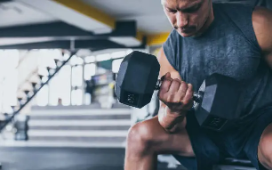But having the right gear can make all the difference in your enjoyment, performance, and even safety. The wrong shoes for running can lead to blisters and discomfort, while ill-fitting clothing can restrict movement and hinder your workout.
This guide will equip you with the knowledge to choose the perfect fitness gear for your chosen sport, helping you maximize your workouts and reach your fitness goals.
Step 1: Know Your Sport

The first step is to identify your sport or activity. Are you a runner pounding the pavement, a yogi seeking inner peace, or a cyclist conquering hills? Each sport has specific demands that require specialized gear.
- Running: Running shoes prioritize cushioning, stability, and breathability. Consider factors like your foot type, running style, and terrain you’ll be tackling.
- Yoga: Look for comfortable, stretchy clothing that allows for a wide range of motion. Opt for moisture-wicking fabrics to stay dry during intense sessions. A supportive yoga mat provides cushioning and grip for various poses.
- Cycling: Invest in a properly fitted bike for comfort and efficiency. Cycling apparel should be aerodynamic and moisture-wicking. Helmets are essential for safety.
Step 2: Prioritize Fit and Comfort
Ill-fitting gear can be a major demotivator. Here’s how to ensure optimal fit and comfort:
- Clothing: Your clothes should move freely with your body without being too baggy or restrictive. Try them on before you buy, and ensure they don’t bunch or chafe. Opt for seams that lie flat against your skin.
- Shoes: Properly fitted shoes are crucial, especially for high-impact activities. Get sized by a professional to ensure the right arch support and prevent blisters.
- Other Equipment: Helmets, goggles, and other sports-specific equipment should fit snugly but comfortably. Look for adjustable features to personalize the fit.
Step 3: Consider Performance Features
While comfort is essential, some sports require specific features to enhance performance.
- Running Shoes: Neutral shoes offer good balance, while stability shoes provide extra support for overpronators. Look for features like responsive cushioning and breathable mesh uppers.
- Yoga Mat: Mats come in varying thicknesses and textures. Thicker mats offer more cushioning for kneeling poses, while thinner mats allow for better balance. Consider a grippy texture for stability during downward-facing dog.
- Cycling Gear: Padding in cycling shorts provides comfort on long rides. Aerodynamic jerseys help reduce wind resistance. Cycling gloves protect your hands and absorb sweat.
Step 4: Don’t Break the Bank
Top-of-the-line gear isn’t always necessary, especially for beginners. Here are some tips for shopping on a budget:
- Set a Budget: Determine how much you’re comfortable spending and stick to it.
- Prioritize Essentials: Focus on acquiring the essential gear you need to participate in your sport safely and comfortably. You can always upgrade later.
- Look for Sales: Many sporting goods stores offer seasonal sales and clearance racks. Consider online retailers for competitive pricing.
- Used Gear: Check out local consignment shops or online marketplaces for gently used equipment at a fraction of the original cost.
Step 5: Invest in Quality When Needed

There are instances where investing in quality gear makes a significant difference:
- High-Impact Activities: For activities like running or weightlifting, investing in well-cushioned shoes or supportive weightlifting belts can help prevent injuries.
- Durability: Higher-quality gear often lasts longer, saving you money in the long run.
- Safety-Critical Equipment: Helmets, bike frames, and other safety gear are worth the investment to minimize the risk of serious injury.
Step 6: Embrace Technology (Optional)
Fitness trackers, heart rate monitors, and GPS watches can provide valuable data to track your progress and optimize your workouts. However, this type of gear is not essential for everyone.
The right fitness gear can transform your exercise experience. By following these steps and considering your specific needs and budget, you’ll be well-equipped to choose the perfect gear to propel you towards your fitness goals. Remember, comfort and fit are paramount, but don’t be afraid to invest in quality when needed. Now get out there and get moving!







